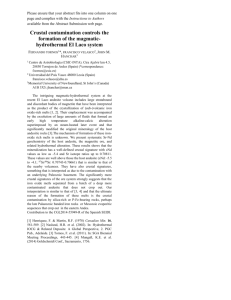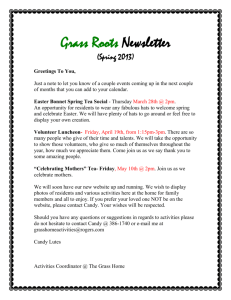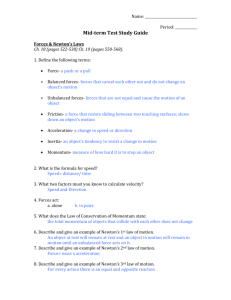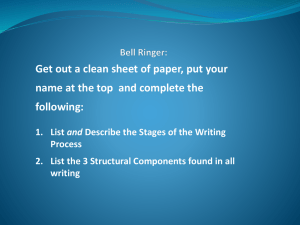edible faults
advertisement
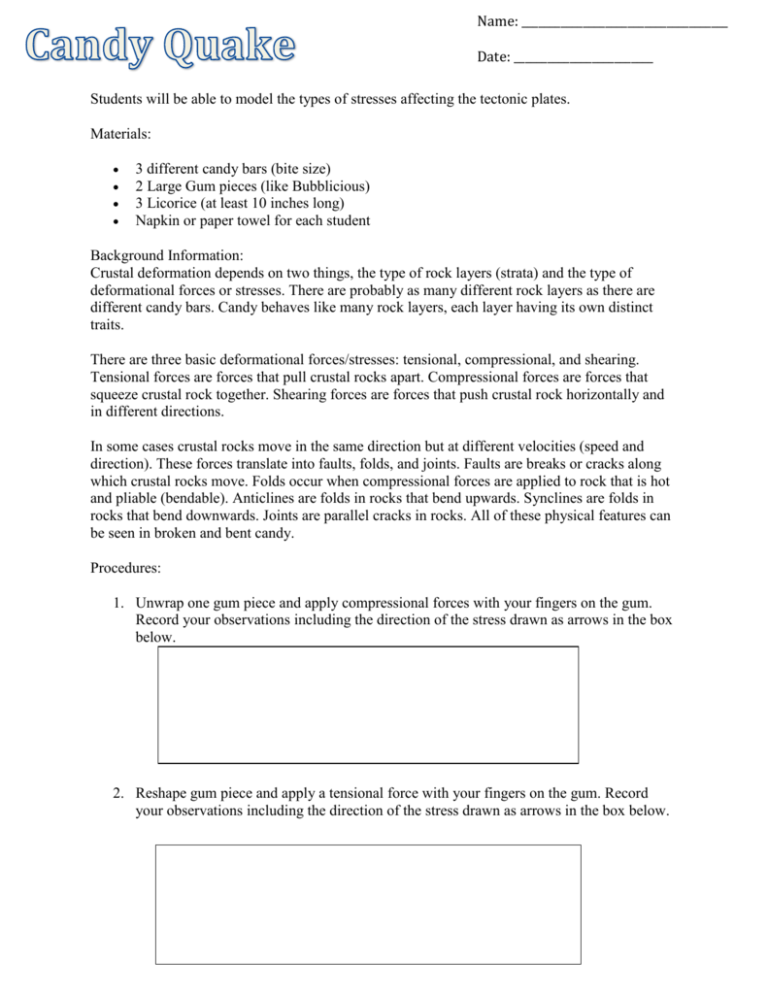
Name: _____________________________________ Date: _________________________ Students will be able to model the types of stresses affecting the tectonic plates. Materials: 3 different candy bars (bite size) 2 Large Gum pieces (like Bubblicious) 3 Licorice (at least 10 inches long) Napkin or paper towel for each student Background Information: Crustal deformation depends on two things, the type of rock layers (strata) and the type of deformational forces or stresses. There are probably as many different rock layers as there are different candy bars. Candy behaves like many rock layers, each layer having its own distinct traits. There are three basic deformational forces/stresses: tensional, compressional, and shearing. Tensional forces are forces that pull crustal rocks apart. Compressional forces are forces that squeeze crustal rock together. Shearing forces are forces that push crustal rock horizontally and in different directions. In some cases crustal rocks move in the same direction but at different velocities (speed and direction). These forces translate into faults, folds, and joints. Faults are breaks or cracks along which crustal rocks move. Folds occur when compressional forces are applied to rock that is hot and pliable (bendable). Anticlines are folds in rocks that bend upwards. Synclines are folds in rocks that bend downwards. Joints are parallel cracks in rocks. All of these physical features can be seen in broken and bent candy. Procedures: 1. Unwrap one gum piece and apply compressional forces with your fingers on the gum. Record your observations including the direction of the stress drawn as arrows in the box below. 2. Reshape gum piece and apply a tensional force with your fingers on the gum. Record your observations including the direction of the stress drawn as arrows in the box below. 3. Unwrap second piece of gum and apply shearing force with your finger on the gum. Record your observations including the direction of the stress drawn as arrows in the box below. 4. This time, using one of your candy bars, repeat Step 1. Leave your candy bar on the napkin. Repeat with your second and third candy bars. Record your observations in the boxes below. 5. Take your Twizzlers and stack them horizontally on top of each other, supporting them with your hands. Apply compressional forces by pushing in towards the center. Observe, illustrate, and label your anticline and syncline in the box below. 6. Closure: Clean up any mess on your desk. Hand in your observation sheet and enjoy your candy.
